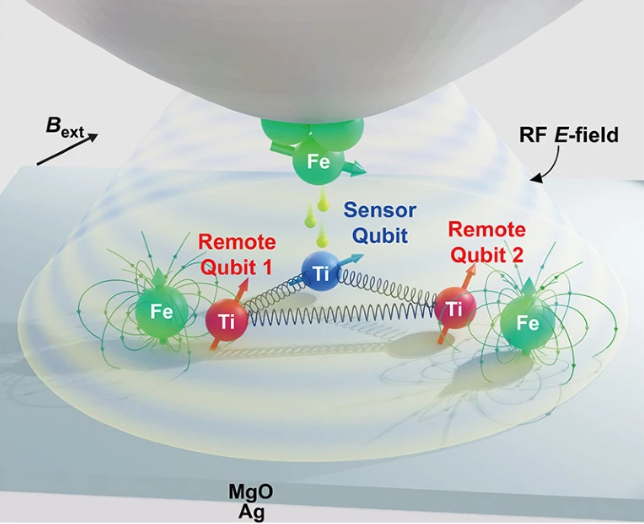Insider Brief
- Researchers from the Center for Quantum Nanoscience, Institute for Basic Science (IBS), South Korea, used a scanning tunnelling microscope (STM) to perform quantum calculations by manipulating titanium atoms on a magnesium oxide surface.
- By emitting microwave signals from the STM tip, the team achieved control over electron spin in the titanium atoms, enabling a simple two-qubit quantum operation that was executed in mere nanoseconds, faster than most other qubit types.
- Andreas Heinrich, the research leader, believes the technique can be extended to manage up to 100 qubits by manipulating spins in individual atoms and molecules.
UNIVERSITY RESEARCH NEWS — Seoul, South Korea/October 12, 2023 — The strange world of qubit types and quantum computing approaches keeps growing. A team of researchers from Center for Quantum Nanoscience, Institute for Basic Science (IBS), Korea, report this Month in Science performing quantum calculations by dragging the tip of a scanning tunneling microscope over titanium atoms on a surface. While no one expects the approach to soon join the crowd of techniques and qubit modalities already vying for sway in quantum computing, it is fascinating.
Here’s the paper’s abstract:
“Individual electron spins in solids are promising candidates for quantum science and technology, where bottom-up assembly of a quantum device with atomically precise couplings has long been envisioned. Here, we realized atom-by-atom construction, coherent operations, and readout of coupled electron-spin qubits using a scanning tunneling microscope. To enable the coherent control of “remote” qubits that are outside of the tunnel junction, we complemented each electron spin with a local magnetic field gradient from a nearby single-atom magnet.

“Readout was achieved by using a sensor qubit in the tunnel junction and implementing pulsed double electron spin resonance. Fast single-, two-, and three-qubit operations were thereby demonstrated in an all-electrical fashion. Our angstrom-scale qubit platform may enable quantum functionalities using electron spin arrays built atom by atom on a surface.”
There’s a nice summary description of the work in Nature written by Davide Castelvecchi: “The researchers started by scattering titanium atoms on a perfectly flat surface made of magnesium oxide. They then mapped the atoms’ positions using the STM, which has atomic resolution. They used the tip of the STM probe to move the titanium atoms around, arranging three of them into a triangle.
“Using microwave signals emitted from the STM tip, the researchers were able to control the spin of a single electron in one of the titanium atoms. By tuning the frequencies of the microwaves appropriately, they could also make its spin interact with the spins in the other two titanium atoms, similarly to how multiple compass needles can influence each other through their magnetic fields. By doing this, the team was able to set up a simple two-qubit quantum operation, and also to read out its results. The operation took just nanoseconds — faster than is possible with most other types of qubit.”
Nature reports that Andreas Heinrich, who led the research, says it will be fairly straightforward to extend the technique to perhaps 100 qubits, possibly by manipulating spins in a combination of individual atoms and molecules.
Link to Nature article, https://www.nature.com/articles/d41586-023-03141-z?utm_source=Nature+Briefing&utm_campaign=92a97c1689-briefing-dy-20231009&utm_medium=email&utm_term=0_c9dfd39373-92a97c1689-46067094#ref-CR1
Link to Science paper, https://www.science.org/doi/full/10.1126/science.ade5050
Written by John Russell
Featured image: Three titanium atoms are arranged inside a scanning tunnelling microscope (STM), close enough to sense each other’s quantum spins. Iron atoms stuck to the tip of the STM (top) ‘talk’ with one of the qubits (blue), using it to read and write information on the other two (red) and to get them to perform a rudimentary quantum computation. Credit: Center for Quantum Nanoscience
For more market insights, check out our latest quantum computing news here.

















